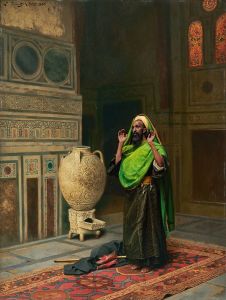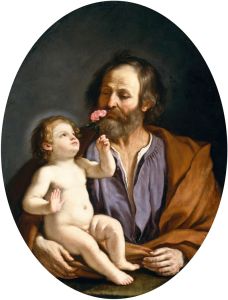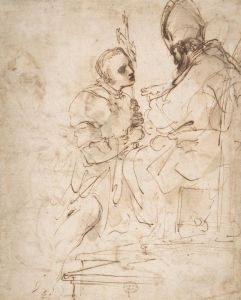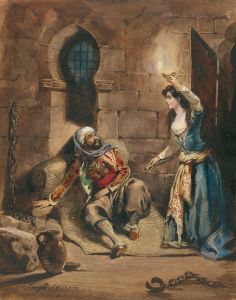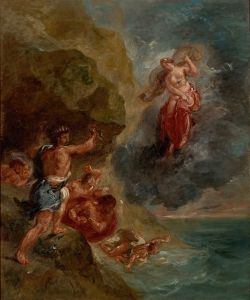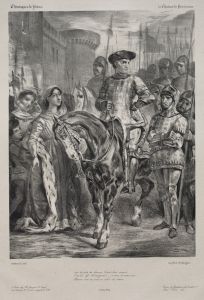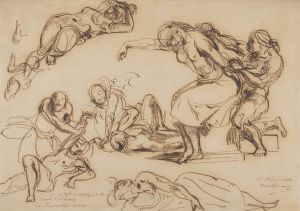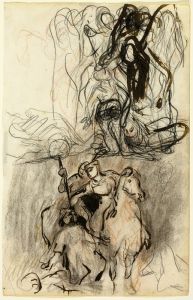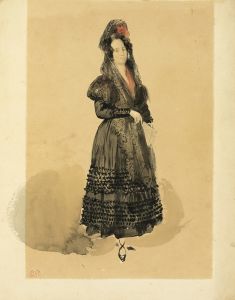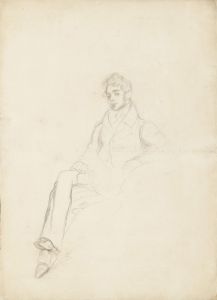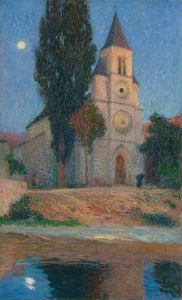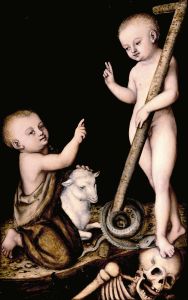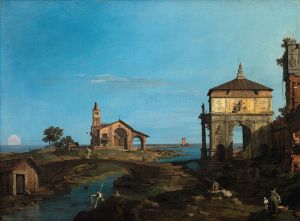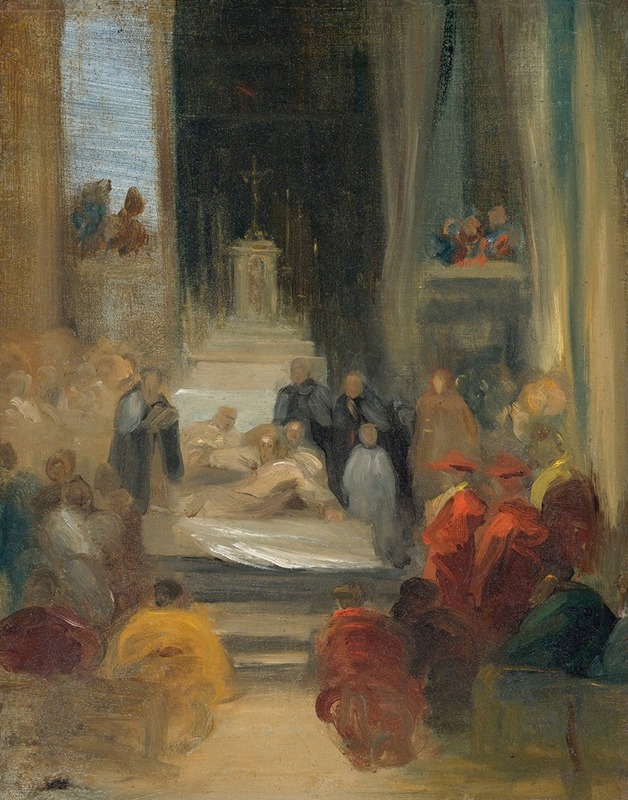
Interior Of A Church; Ordination Of Carmelites
A hand-painted replica of Eugène Delacroix’s masterpiece Interior Of A Church; Ordination Of Carmelites, meticulously crafted by professional artists to capture the true essence of the original. Each piece is created with museum-quality canvas and rare mineral pigments, carefully painted by experienced artists with delicate brushstrokes and rich, layered colors to perfectly recreate the texture of the original artwork. Unlike machine-printed reproductions, this hand-painted version brings the painting to life, infused with the artist’s emotions and skill in every stroke. Whether for personal collection or home decoration, it instantly elevates the artistic atmosphere of any space.
"Interior Of A Church; Ordination Of Carmelites" is a painting by the renowned French Romantic artist Eugène Delacroix. Delacroix, born on April 26, 1798, and died on August 13, 1863, is often considered one of the leading figures of the Romantic movement in art. His works are known for their vibrant color, dynamic compositions, and emotional intensity.
The painting "Interior Of A Church; Ordination Of Carmelites" depicts a solemn religious ceremony taking place within the grand interior of a church. The scene captures the ordination of Carmelite monks, a significant event in the Catholic Church where individuals are consecrated as members of the Carmelite Order, a mendicant religious order with a rich history dating back to the 12th century.
Delacroix's mastery in rendering architectural details is evident in this work. The church's interior is depicted with meticulous attention to the Gothic or Baroque architectural elements, including soaring arches, intricate columns, and stained glass windows that allow light to filter into the sacred space. The use of light and shadow in the painting enhances the spiritual atmosphere, creating a sense of reverence and solemnity.
The figures in the painting are arranged in a dynamic composition, typical of Delacroix's style. The central focus is on the ordination ceremony, where the monks, dressed in their distinctive white habits, are seen kneeling and receiving the sacrament. The clergy, adorned in elaborate vestments, perform the rites with a sense of gravity and devotion. The congregation, composed of various figures, including laypeople and other clergy members, observes the ceremony with piety and attentiveness.
Delacroix's use of color in "Interior Of A Church; Ordination Of Carmelites" is notable for its richness and depth. The warm tones of the church's interior contrast with the cooler hues of the monks' habits and the clergy's vestments, creating a harmonious yet striking visual effect. The artist's brushwork is both precise and expressive, capturing the textures of the different materials, from the stone of the church's architecture to the fabric of the garments.
This painting reflects Delacroix's interest in religious themes and his ability to convey the emotional and spiritual dimensions of such scenes. It also demonstrates his skill in handling complex compositions and his keen eye for detail. While Delacroix is perhaps best known for his dramatic historical and literary subjects, "Interior Of A Church; Ordination Of Carmelites" showcases his versatility and his capacity to imbue even the most solemn and quiet moments with a sense of grandeur and significance.
Overall, "Interior Of A Church; Ordination Of Carmelites" is a testament to Eugène Delacroix's artistic prowess and his contribution to the Romantic movement. The painting remains an important work in the study of 19th-century European art, reflecting both the artist's technical skill and his deep engagement with the themes of faith and devotion.





